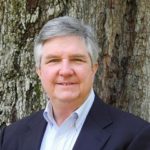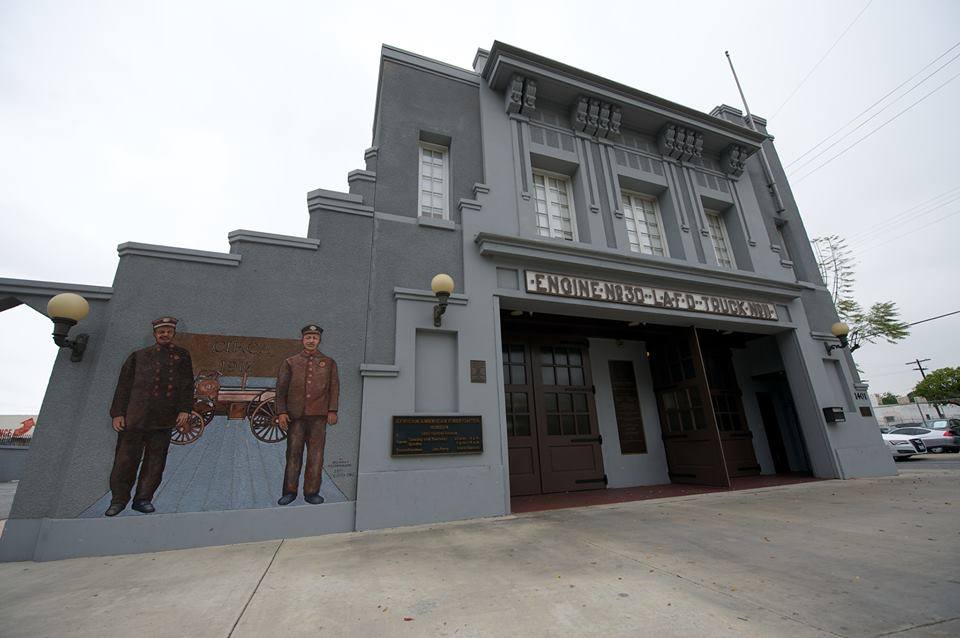Los Angeles’ African American Firefighter Museum
New MAP Review Identifies Community Needs
by George W. McDaniel
As a Museum Assessment Project (MAP) Peer Reviewer for Community Engagement, I visited the African American Firefighter Museum for approximately two days in July 2017. Located in a fire station built in 1913 when S. Central Ave. was the Black Main Street of Los Angeles during the segregation era, it became one of two African American fire stations during the Jim Crow era. In 1980 it ceased operations, and was restored and opened as an African American Firefighter Museum in 1997, thanks to the leadership of black firefighters who led the push for desegregation and equal rights.
Today, the historical community has been obliterated and replaced with industrial and commercial buildings, creating unwelcoming environs that shape public perception and affect museum visitation. Consisting principally of retired or current firefighters, its board is devoted; with no paid staff, the board has also volunteered to assume the roles of typical museum staff, aided by non-board volunteers. During my visit I saw how dedicated these volunteers are, so it is remarkable this museum has been able to function financially and programmatically all these years. Recognizing this unsustainable situation, the board has engaged in a number of planning initiatives, of which this MAP Community Engagement project is the latest.

Members of the board: front row from left: Akosua Hobert-Pierce and Carolyn Williamson Hughes; second row from left: Jimmy Smith, Michael Henderson, Susan Zwerling, Ryan Ballard, Kelli Shope, MAP peer reviewer George W. McDaniel of McDaniel Consulting, and David Spence
The museum produced a strong mission statement in 2014, which guides planning. As a result of our meetings, we identified three “community needs” that attract and engage public perception:
- Amidst today’s cultural polarization, firefighters exemplify our common humanity. When they respond to a fire, they do not stop and ask what the race, religion, economic, is or immigrant status of those endangered. They answer the call to a higher duty and serve as a unifying force.
- Fire safety and fire prevention are universal needs. The museum teaches fire safety and fire prevention through programs on site and off, lessons needed by all community sectors.
- Work force training, job careers, and life skills for today’s youth. Through its programs, the museum teaches young people about the skills and values needed for a career in firefighting, one of the few professional careers today that still do not require a college degree.
To make improvements and capitalize on these needs, my six key recommendations were:
- Expand the conventional concept of “community”;
- Diversify the board in terms of age, ethnicity, profession/business, giving capacity, geography, or other attributes;
- Hire paid staff;
- Enhance the museum’s fundraising;
- Practice hitting triples, not singles;
- Expand and regularize its collaborations and communications with community and museum resources.
The good news is that the museum is located in the first and only free-standing fire station in the nation that is used as an African American firefighter museum. Its artifacts both are real and look real, and are enriched by real stories that bring them to life. In a city of Disneyland and make-believe, this museum is the real thing. Its board feels a deep and personal connection to the museum’s founders, the men and women who pushed for desegregation and weathered the consequences, making possible the very careers these men and women today enjoy. They are dedicated, have both practical and idealistic aspirations, and are striving to achieve their mission by following a methodical process. Reflecting on recent and future steps, David Spence, chairman of the board, explained, “We may be taking small bites, but we will eat the whole pie.”
The African American Firefighter Museum is open to the public, with free admission, Tuesdays and Thursdays from 10:00am to 2:00pm, and Sundays from 1:00pm to 4:00pm.
To learn more about the African-American Firefighter Museum please visit their website at aaafmuseum.org
For a history of black firefighters in Los Angeles click here.
 George W. McDaniel, Ph.D., is President of McDaniel Consulting, LLC, a strategy firm that helps organizations use history to build bridges within itself and to its broader constituents. The company’s tag line, “Building Bridges through History,” is grounded in McDaniel’s personal beliefs and his experience in site management, preservation, education, board development, fundraising, and community outreach. Rather than using history to divide us, he strives to help organizations use history, especially local history, to enhance cross-cultural understanding and to support local museums, preservation, and education. Dr. McDaniel recently led volunteer efforts with Emanuel AME Church and historical organizations in Charleston to use historic preservation to enhance racial reconciliation and healing.
George W. McDaniel, Ph.D., is President of McDaniel Consulting, LLC, a strategy firm that helps organizations use history to build bridges within itself and to its broader constituents. The company’s tag line, “Building Bridges through History,” is grounded in McDaniel’s personal beliefs and his experience in site management, preservation, education, board development, fundraising, and community outreach. Rather than using history to divide us, he strives to help organizations use history, especially local history, to enhance cross-cultural understanding and to support local museums, preservation, and education. Dr. McDaniel recently led volunteer efforts with Emanuel AME Church and historical organizations in Charleston to use historic preservation to enhance racial reconciliation and healing.
McDaniel is also the Executive Director Emeritus of Drayton Hall, a historic site in Charleston, SC, owned by the National Trust for Historic Preservation. He retired from Drayton Hall in 2015 after 25 years of distinguished service.
Header Image Photo Credit: The African American Firefighter Museum website at http://www.aaffmuseum.org/

 McDaniel Consulting LLC is a strategy firm that helps organizations use history to build bridges within itself and its broader constituents.
McDaniel Consulting LLC is a strategy firm that helps organizations use history to build bridges within itself and its broader constituents.